First of two parts.
With net-zero carbon targets high on the agenda for oil and gas companies, subsea tiebacks are lowering the carbon intensity of new developments and leveraging production capacity at existing facilities.
To nobody’s surprise, the North Sea is home to most of the tiebacks scheduled to come online, as the area is dotted with infrastructure in both deep and shallow water. With developments coming in both Norway and the U.K., the area looks to continue to be one of the most active regions in terms of new developments.
Among countries looking to establish themselves as players in the energy sector, a Guyanese development, which is the single largest investment in Guyana’s energy sector, is expected to come online in 2024.
The following project-by-project summary looks at the latest developments of these projects and others. Information was gathered from public information and analysis. The first in a two-part series, this is a look at some of the subsea tiebacks scheduled to be online by 2024, as well as projects that came online within the past year. Part two will cover tieback projects set to come onstream in 2025 and beyond.
| Project Name | Country | Block/PL | Water depth (feet) | Status | Onstream | Operator |
|---|---|---|---|---|---|---|
| Anchois | Morocco | Lixus license | 2,700 | Planning | 2024 | Chariot Energy |
| Begonia | Angola | Block 17/06 | 1,300-2,300 | Sanctioned | 2024 | TotalEnergies |
| Eldfisk North | Norway | Block 2/7 PL 018 | 230 | Sanctioned | 2024 | ConocoPhillips |
| Evelyn | U.K. | Block 21/30f PL 1792 | 310 | Onstream | 2022 | Tailwind Energy |
| Hanz | Norway | PL 028 B | 380 | Sanctioned | 2024 | Aker BP |
| Kobra East & Gekko | Norway | PL203 | 410 | Sanctioned | 2024 | Aker BP |
| Kristin Sør | Norway | 6406/2-1 license area | 920 | Sanctioned | 2024 | Equinor |
| Lime Rock-Venice | U.S. | Viosca Knoll Blocks 912, 1000 | 3,200 | Planning | 2024 | Talos Energy |
| MJ Field | India | KG D6 | 1,970-4,000 | Sanctioned | 2023 | Reliance Industries |
| Nova | Norway | PL 418 | 1,200 | Onstream | 2022 | Wintershall Dea |
| Spruance | U.S. | Ewing Bank Blocks 877, 921 | 1,600 | Onstream | 2022 | LLOG |
| Taggart | U.S. | Mississippi Canyon Block 816 | 5,650 | Sanctioned | 2023 | LLOG |
| Wales | Guyana | Stabroek block | 4,600 | Planning | 2024 | Exxon Mobil |
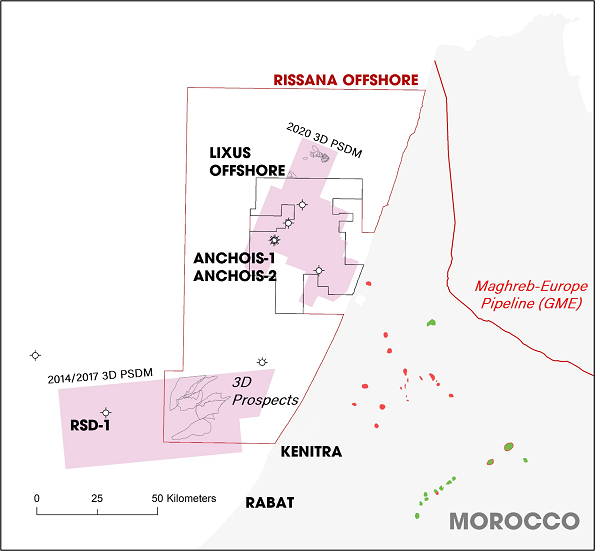
Anchois
Chariot Energy is moving forward with its deepwater Anchois gas development offshore Morocco. In June of last year, the company awarded a FEED contract to SLB and Subsea 7 as part of a consortium to fast-track the project to first gas.
The consortium will be responsible for well completions, subsea production systems, subsea umbilicals, risers & flowlines. SLB will deliver a central processing facility, flowlines and controls from the processing facility to the shore crossing. Beyond this, Chariot will manage the remainder of the FEED scope required for the development, including well construction and onshore infrastructure.
The development sits in the Tanger-Larache exploration area of the Lixus license, 40 km off the coast of Morocco, in the Atlantic Ocean in water depths up to 2,700 ft.
The field will be developed in two phases, with first gas expected in 2024. Phase 1 consists of three production wells, including the Anchois-1 and Anchois-2 wells, which have already been drilled and will be completed as producers. The third producer will be brought onstream by 2027 and an onshore processing facility. Initial production is estimated to reach 40 MMcf/d and ramp-up to 70 MMcf/d three years later. Phase 2 will include four to six additional production wells. Production is expected to plateau at 100 MMcf/d.
Chariot and Morocco's National Office of Hydrocarbons and Mines (ONHYM) have reached a framework agreement for long-term gas sales from the offshore Anchois Field development with Morocco’s Office National de l'Electricité et de l'Eau Potable (ONEE). Under the proposed 10-plus year deal, Chariot would supply 600 MMcm per year via the Gazoduc Maghreb-Europe Gas pipeline.
The field is jointly owned, with Chariot holding an operated 75% interest and ONHYM holding a 25% carried interest.
Begonia
The $850 million Begonia development comprises five subsea wells tied back to TotalEnergies’ Pazflor FPSO. The field is located in Block 17/06, about 90 miles off the Angolan coast in water depths of 1,300 ft to 2,300 ft.
Begonia is the second TotalEnergies project in Angola to use a standardized subsea production system, which the operator says is saving up to 20% on costs and shortening equipment delivery time.
Production from three wells will be gathered through a 12-mile multiphase production flowline, connected to an existing riser. There are two water injector wells as well. Once online in late 2024, it will add 30,000 bbl/d of production to the Pazflor FPSO.
TotalEnergies awarded McDermott International the engineering, procurement, supply, construction, installation, pre-commissioning and assistance to commissioning and start-up (EPSCI) contract for Begonia. McDermott will provide all EPSCI services for subsea umbilicals, water injection and production flowlines. TechnipFMC is supplying the subsea production under a framework agreement that covers brownfield developments in blocks 17 and 17/06.
TotalEnergies operates Block 17/06 with a 30% interest, alongside affiliates of Sonangol P&P with 30%, SSI with 27.5%, ACREP/Somoil with 5%, Falcon Oil with 5% and PTTEP with 2.5%.
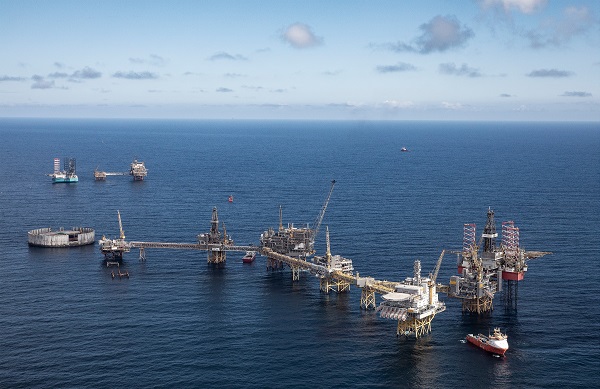
Eldfisk North
Norway’s Ministry of Petroleum and Energy has approved ConocoPhillips’ plan for development and operation for the Eldfisk North subsea tieback project.
The $1.2 billion Eldfisk North project calls for three, six-well subsea templates tied back to ConocoPhillips’ existing Eldfisk complex 4 miles away in 230 ft of water in the North Sea. The plan includes drilling up to 14 wells, with nine of the wells being producers and the other five for water injection. The West Elara jackup will carry out the drilling program.
First production is expected in 2024, and resource potential is estimated at 50 MMboe to 90 MMboe.
Aker Solutions won a contract from ConocoPhillips to provide a subsea production system for Eldfisk North. The scope includes 13 standardized vertical subsea trees, wellheads, control systems, three six-slot templates with integrated manifolds and associated services. Work on the contract will be done at Aker Solutions’ facilities in Brazil, Malaysia, Norway and the U.K. with final deliveries scheduled for 2024.
ConocoPhillips Skandinavia AS operates the Eldfisk Field in PL 018 with 35.112% interest, on behalf of partners TotalEnergies EP Norge AS with 39.896%, Vår Energi AS with 12.388%, Equinor AS with 7.604% and Petoro AS with 5%.
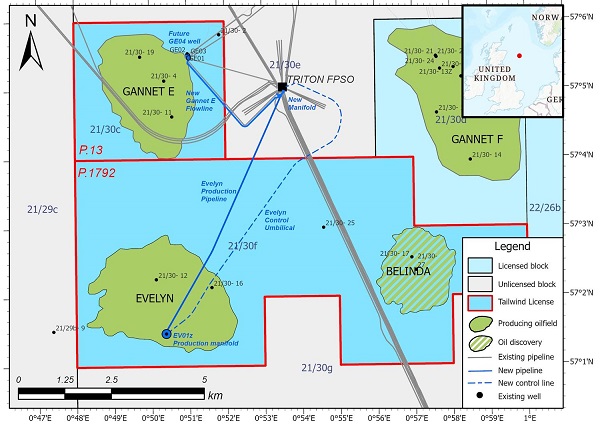
Evelyn and Gannet East
Tailwind’s combined Evelyn Phase 1 development and Gannet East Expansion projects began first production in September 2022 as a subsea tieback to Dana Petroleum’s Triton FPSO, 4 miles away in the U.K. Central North Sea.
Evelyn was originally discovered in 1984. Tailwind acquired the field from Shell as part of its acquisition of a cluster of assets in the Greater Triton Area in 2018 and submitted a field development plan in 2020. The North Sea Transition Authority granted approval in early 2021.
FPSO owner Dana Petroleum contracted TechnipFMC to fabricate and install an umbilical riser, as well as two flexible risers on Triton and provide engineering, procurement, installation, and commissioning.
Evelyn Field sits in 311 ft water depth and was developed together with the Gannet East expansion project.
Tailwind holds 100% interest in Evelyn in license P.1792 in block 21/30. Tailwind also has 46.42% equity in the Triton FPSO.
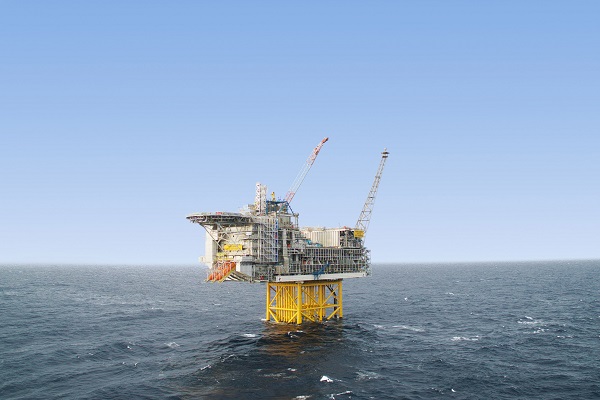
Hanz
In late 2021, Aker BP and its license partners made the final investment decision (FID) for development of the Hanz discovery in the North Sea.
The Norwegian project, located in PL028 B, sits at a water depth of 380 ft and holds reserves around 20 MMboe. Hanz will be tied back to the Ivar Aasen platform 7 miles north of the field, with expected start-up in the first half of 2024. Total investments are estimated at $363 million.
Subsea7 is handling the engineering, procurement, construction and installation (EPCI) of the gas lift and production pipelines and associated subsea infrastructure using vessels from Subsea7’s fleet. The production pipeline is a pipe-in-pipe design. Offshore operations are expected to be carried out this year.
Aker BP operates the development with 35% interest on behalf of Equinor with 50% and Spirit Energy with 15%.
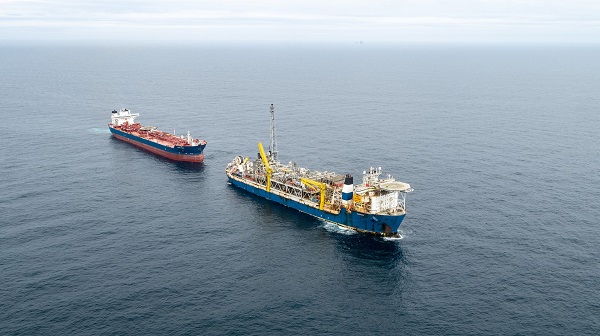
Kobra East & Gekko
Production on Aker BP’s Kobra East & Gekko (KEG) development in the North Sea is expected to begin in the first quarter of 2024.
The KEG fields, targeting estimated recoverable reserves of 50 MMboe, will be tied back to the Alvheim FPSO.
The project is located in PL203 in the central North Sea in 410 ft of water offshore Norway. The Kobra Field was discovered in 1997 while the Gekko Field was discovered in 1974.
Aker BP awarded contracts to the subsea alliance of Aker Solutions, Subsea7 and Aker BP for the engineering, procurement, fabrication and installation of the subsea production system and subsea umbilicals, risers and flowlines in July 2021.
Odfjell Drilling’s Deepsea Nordkapp began drilling in January. Drilling will take place from Gekko South and Gekko North. Total investments are projected at $1 billion, and drilling costs claim a major part of the investment.
Aker BP operates the development with 65% interest on behalf of partners ConocoPhillips Skandinavia with 20% and Lundin Energy Norway with 15%.
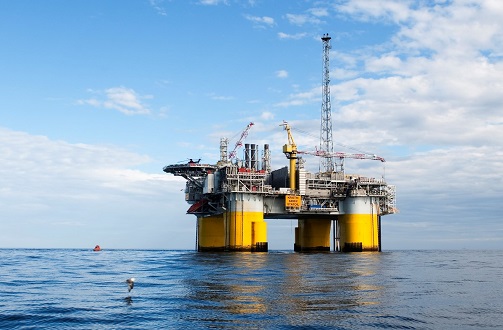
Kristin Sør
In June 2021, Equinor and its partners submitted the plan for development and operation of the Lavrans and Kristin Q discoveries as satellites to the Kristin Field. This is the first phase of the Kristin Sør project, which is located off the coast of Norway in the Norwegian Sea.
The Kristin Q high-pressure, high-temperature discovery is located in the southern part of the Kristin Field. The Lavrans discovery is located in 6406/2-1 license area, approximately 6 miles southeast of the existing Kristin Field in a water depth of 920 feet. Discovered in 1995, the Lavrans was appraised with two appraisal wells.
Both Aker Solutions and TechnipFMC were awarded contracts for the project. The Aker Solutions’ contract includes a subsea template with four standardized vertical subsea trees for the Lavrans Center, as well as a manifold for the Kristin Q Field. TechnipFMC was awarded an engineering, procurement, construction and installation contract for rigid pipelines, static and dynamic umbilicals, as well as pipeline and marine installation of the subsea production facilities.
Production for the $735 million Kristin Sør project is planned to start in 2024. The expected production period is 11 years and expected recoverable reserves are 58 MMboe.
Equinor operates the field with 54.82% interest on behalf of partners Petoro with 22.52%, Vår Energi with 16.66% and TotalEnergies EP Norge with 6%.
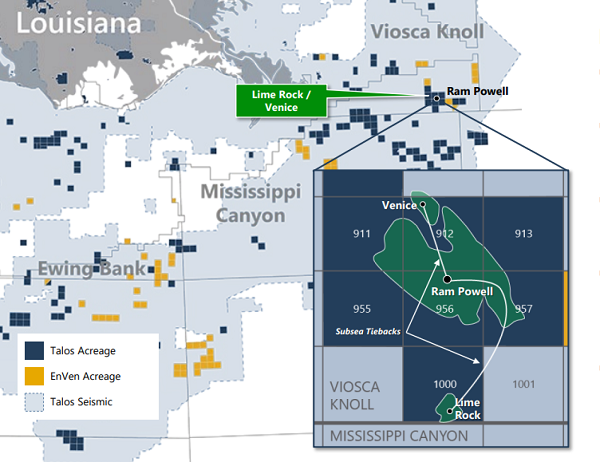
Lime Rock-Venice
In January 2023, Talos Energy announced their Lime Rock and Venice prospects in the U.S. Gulf of Mexico (GoM) had both discovered commercial quantities of oil and natural gas.
The two deepwater discoveries are located near Talos’ Ram Powell TLP in 3,200 ft water depth, so future production from both wells will flow to it via subsea tiebacks to a shared riser system at Ram Powell. The TLP is 9 miles from the Lime Rock discovery and 4 miles from the Venice discovery.
Talos collected pressure, fluid and core samples from the wells to confirm the discoveries and found net hydrocarbon pay in 78 ft of the Lime Rock and 72 ft of the Venice. The two discoveries have expected combined gross recoverable resources of 20 MMBoe to 30 MMBoe.
Louisiana-based firm EDG recently won a contract to modify the Ram Powell platform’s topsides to accommodate the Venice and Lime Rock subsea tiebacks. EDG will be responsible for the engineering and design of the platform additions, including all equipment integration, piping, structural, instrumentation and electrical additions and modifications.
First production is expected by first-quarter 2024.
Talos holds a 60% working interest in the two deepwater discoveries.
MJ Field
Reliance Industries and BP are nearing the start of production from their MJ deepwater subsea tieback project in the KG-D6 block. The project is expected onstream this quarter in the Bay of Bengal offshore India.
Reliance and BP are spending $5 billion to rejuvenate the block. The first two developments – R-Cluster and Satellite Cluster – have started gas production, and MJ is nearing completion. MJ-1 is estimated to hold 1 Tcf or more of resources.
The development is expected to be the third largest on the block. The MJ development includes seven production wells linked to the Ruby FPSO from a pair of subsea drill centers. The MJ project in Block KG-D6 is in water depths of 1,970 ft to 4,000 ft.
Reliance holds a 66.67% operated interest in KG-D6, with BP holding the remaining 33.33%.
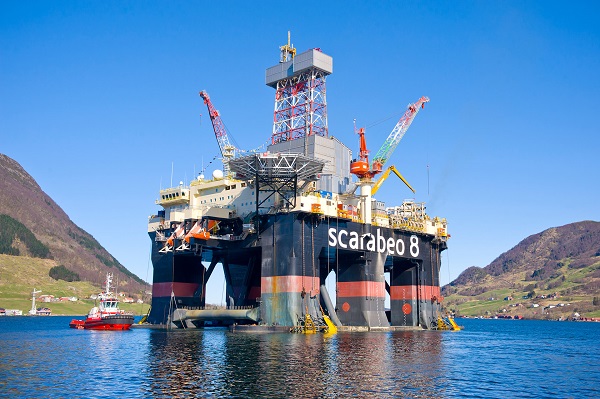
Nova Field
The Nova Field, which came onstream in the summer of 2022, was developed as a subsea tieback to the existing Gjøa platform in the North Sea offshore Norway.
Discovered in 2012, Nova is 10 miles southwest of Gjøa in a water depth of roughly 1,200 ft. The field in PL418 consists of two subsea templates, one with three oil producers and one with three water injectors, tied back to Neptune Energy’s Gjøa platform. The host platform provides gas lift and water injection to the field and receives the Nova hydrocarbons.
Recoverable gross reserves from the field are estimated at 90 MMboe, of which the majority is oil.
In 2021, Saipem was awarded a contract for semisubmersible rig Scarabeo 8 to finalize the drilling campaign for six wells in the Nova Field.
Wintershall Dea operates the Nova Field with a 45% stake. Partners include Sval Energi with 45% and Pandion Energy Norge with 10%. Wintershall also has a 28% share in the Gjøa infrastructure.
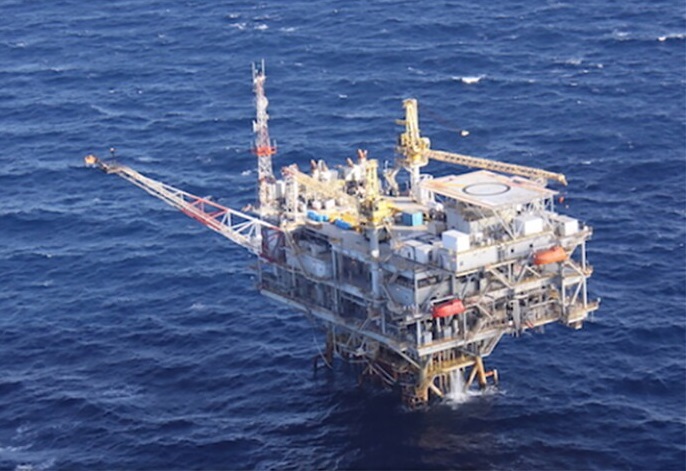
Spruance Field
In June 2022, LLOG announced it had reached first production from its operated Spruance Field, located in Ewing Bank Blocks 877 and 921 in the U.S. GoM.
RELATED: LLOG Exploration Announces First Production from Spruance Field in Deepwater GoM
The two-well subsea development is averaging production of approximately 16,000 bbl/d and 13 MMcf/d of gas via a 14-mile subsea tieback to the EnVen-operated Lobster platform in Ewing Bank Block 873.
The Spruance Field was initially discovered by LLOG and its partners in mid-2019 via a subsalt exploratory well drilled in 1,570 ft of water to a total depth of 17,000 ft and logged approximately 150 net feet of oil pay. A second well was drilled from the same location as the discovery well to a total depth of 16,600 ft in early October 2020 and found over 200 net feet of oil.
LLOG awarded Trendsetter Engineering a contract to provide a subsea manifold and TCS Connection Systems for the Spruance Field. Trendsetter’s scope of work includes the design and manufacture of the subsea connectors, manifold, the associated pipework and the mud mat. Trendsetter also provided the production system with subsea gate valves from Italy‘s Advanced Technology Valve.
LLOG is the operator of the Spruance Field and owns a 22.64% working interest with partners Ridgewood Energy with 23.89%, EnVen with 13.5%, Beacon Asset Holdings with 11.61%, Houston Energy with 11.2%, Red Willow with 11.15% and CL&F with 6%.
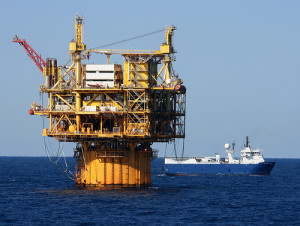
Taggart
LLOG’s 100%-owned Taggart development in deepwater U.S. GoM is set to come online in the first quarter of 2023.
The development is located in Mississippi Canyon Block 816 in 5,650 ft of water and will tie back to the Williams-owned Devils Tower spar in nearby Mississippi Canyon Block 773 using subsea infrastructure owned by Eni and Marubeni.
Williams reached a tieback agreement with LLOG back in June of 2020 to provide offshore natural gas gathering and production handling services, as well as onshore gas treatment and processing. Combined reserves are approximately 32 MMboe.
The discovery well was drilled in 2013 to a depth of 11,562 ft and encountered 97 ft of net pay. Appraisal wells drilled in 2015 and 2019 encountered 147 ft and 84 ft of net pay, respectively.
Wales
Exxon Mobil is progressing plans for the Wales gas to energy project in cooperation with the Guyanese government, but has yet to make an FID on the project.
The proposed project would bring associated gas from Exxon Mobil’s Guyana projects like Liza Phase 1 and 2 via pipeline to onshore gas processing facilities. The pipeline would transport up to 50 MMcf/d of natural gas to the facilities. Start-up is expected by the end of 2024.
RELATED: Hess Corp. Reports Fangtooth SE-1 Find, Sets 2023 Capex Budget at $3.7 Billion
Exxon Mobil awarded TechnipFMC a contract to connect production from Liza Destiny and Unity FPSOs in Guyana’s Stabroek block back to shore, delivering associated gas from the field to a gas-fired power plant along the coast that will supply electricity to the community. Subject to final project sanction, TechnipFMC will provide engineering, procurement, construction and installation (EPCI) of subsea risers and pipelines.
Exxon Mobil awarded a separate contract to Subsea 7 and Van Oord for the offshore project. The contract covers project management, engineering and installation of about 120 miles of natural gas pipeline in water depths up to 4,600 ft, with an associated shallow water portion and onshore approach making landfall to the west of the Demerara River. Van Oord's scope consists of the shore approach and installation of 46 miles of pipeline nearshore. Van Oord will deploy its shallow water pipelay barge Stingray in water depths of up to 92 ft and start its operations in mid-2023.
Recommended Reading
Exclusive: TPL Eyes Midland Growth to Replicate Delaware Basin Success
2024-10-29 - Texas Pacific Land CFO Chris Steddum discusses the company's approach to acquisitions in both the Delaware and Midland basins, and TPL's selective strategy when evaluating deals, in this Hart Energy Exclusive interview.
Utica Oil Riches’ Biggest Challenge: Moving the Crude
2024-10-28 - Leslie Armentrout, the president and co-founder of Silver Cross Energy Partners discusses the opportunities of the Central Basin Platform and Utica—and the challenges.
Rising Phoenix: The Anti-Permian Minerals Firm Buying … Permian
2024-09-13 - Rising Phoenix Minerals CEO Jace Graham said his boutique firm isn’t getting any bigger: The company doesn’t need a squad of infantry when “we’ve got a team of snipers.”
Non-op Rising: NOG’s O’Grady, Dirlam See Momentum in Co-purchase M&A
2024-09-05 - Non-operated specialist Northern Oil & Gas is going after larger acquisitions by teaming up with adept operating partners like SM Energy and Vital Energy. It’s helping bridge a capital gap in the upstream sector, say NOG executives Nick O’Grady and Adam Dirlam.
Building a Better Non-op? Control the Purse Strings, Executives Say
2024-08-27 - As they trail E&Ps in the public markets, some non-operated oil and gas companies are taking firmer control of drilling decisions as executives look to reinvent their business model.
Comments
Add new comment
This conversation is moderated according to Hart Energy community rules. Please read the rules before joining the discussion. If you’re experiencing any technical problems, please contact our customer care team.






